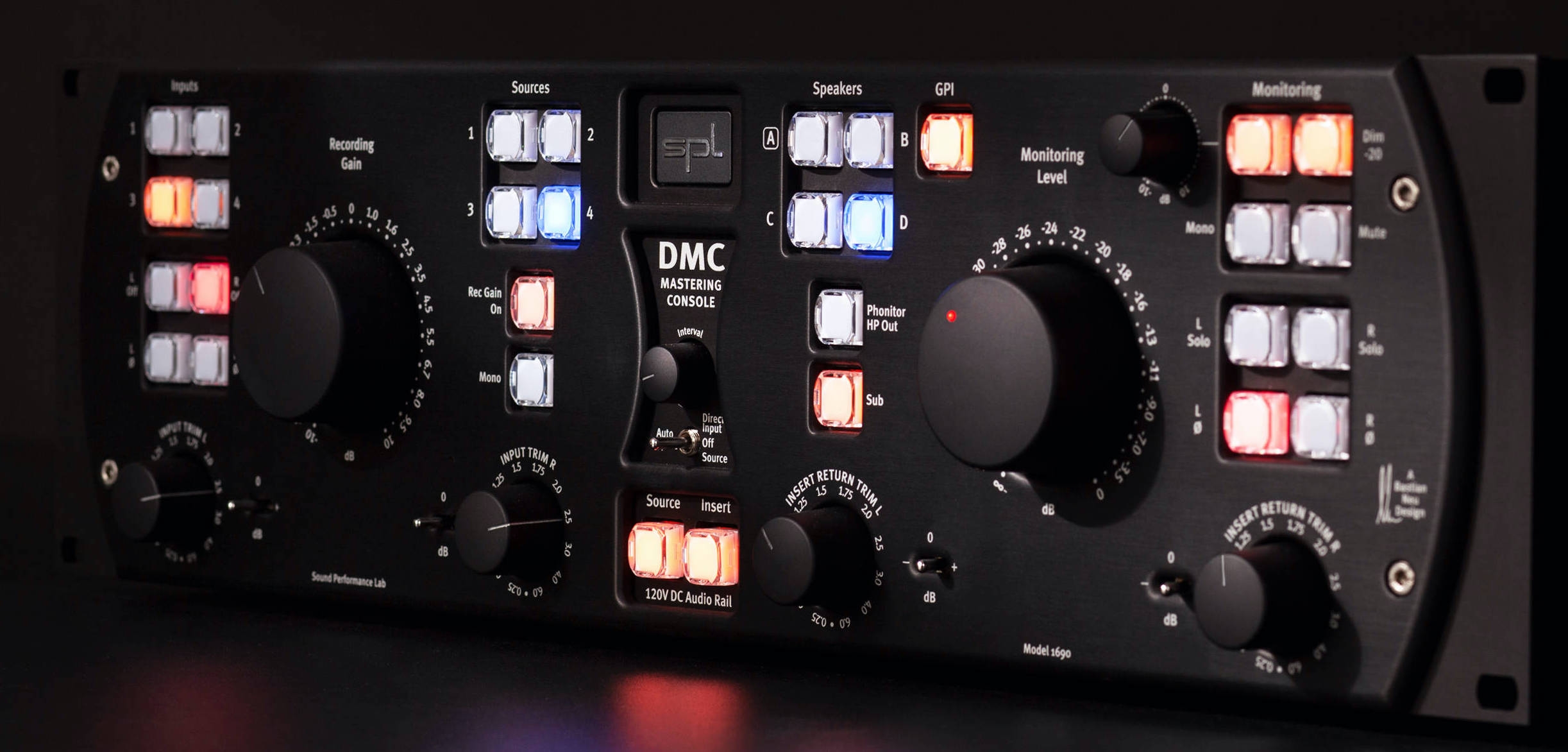Three pairs of speakers can be operated for full-range, mid-field and near-field monitors. Speakers D is for a mono loudspeaker.
Preferably a Phonitor headphone amplifier is connected to the Phonitor HP Out, whereby it can be programmed whether the loudspeaker is automatically switched off during headphone operation or not.
The same applies to the subwoofer. It can be programmed with which monitor it is paired and activated together.
The insert return can also be trimmed in 0.25 dB steps to compensate for the finest level differences after an insert chain. The Hermes Mastering Router is preferably connected to the inserts, with which up to eight stereo processors can be connected and freely routed and stored.
In the monitoring section, each loudspeaker channel can be solo’ed and phase reversed.
The large monitoring level potentiometer has an illuminated indicator so that the monitor level can be easily assessed even from a greater distance.
A loudness compensation (+/- 10 dB) can be activated. Alternatively it can be linked to the Insert, Sources or Inputs switches allowing loudness compensation at any stage.
DMC & MC 16
Yeah, it looks kind of wild. Makes sense, though.
The DMC can be linked to the MC16 for surround and immersive audio applications. Dolby Atmos® or Auro 3D® projects can also be realized. The MC16 is the world’s first analog 16 channel monitoring controller.
Mastering studios often use the L/R speakers and subwoofer for stereo and multi-channel monitoring. The combination of DMC with MC16 makes it unnecessary to replug these speakers.
Pressing the Speaker A button for two seconds transfers the volume control of L/R and Sub to the MC16 and pressing it again brings it back to the DMC. In this way, stereo and surround projects in a studio can easily be performed one after the other.
 2 Years Warranty
2 Years Warranty 2 Years Warranty
2 Years Warranty












